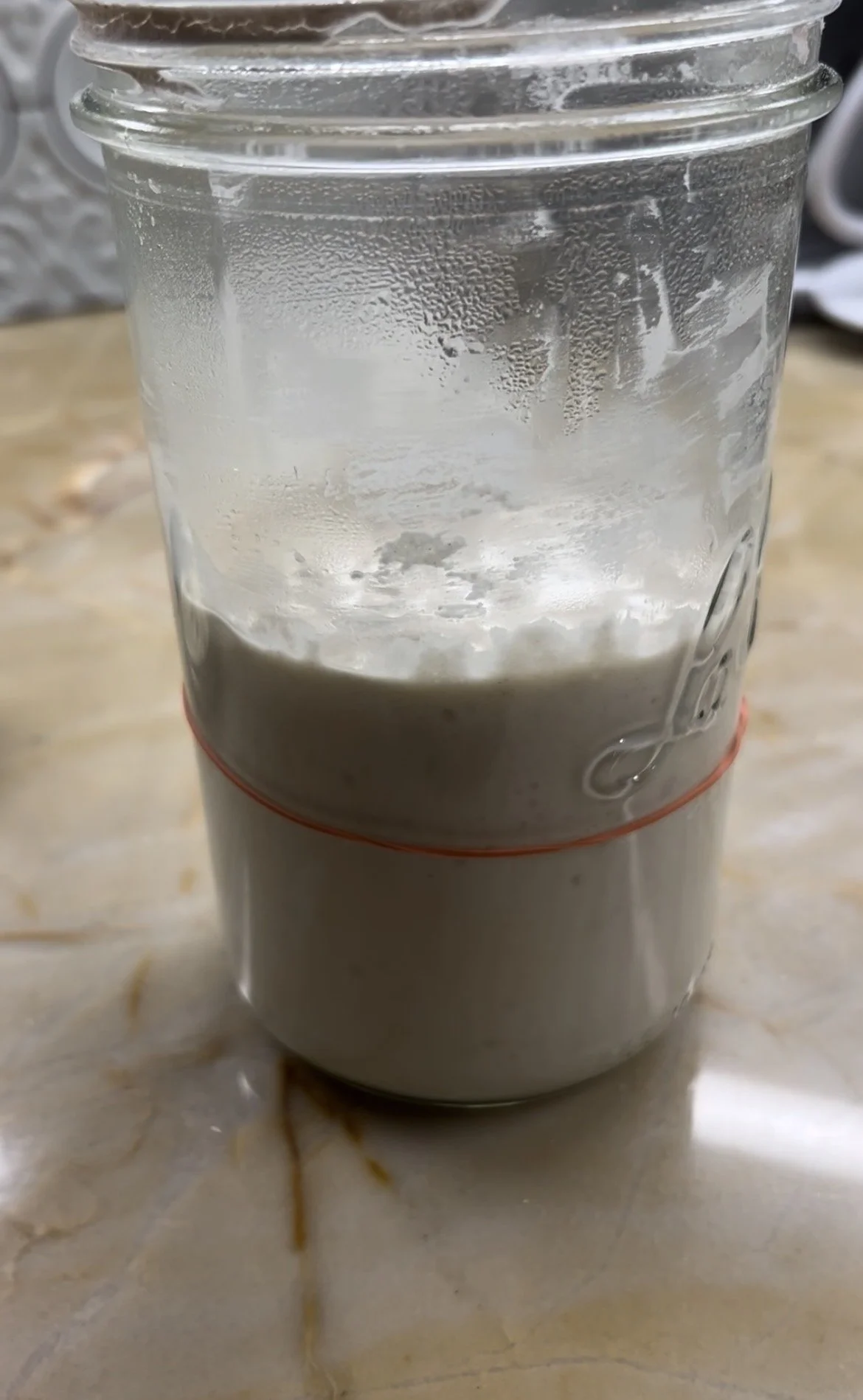Gluten Free Sourdough Starter 101
Fool-Proof Gluten Free Sourdough Starter.
Here’s how to create a vibrant, active gluten-free sourdough starter from scratch using just two simple ingredients: brown rice flour and water. This easy, step-by-step guide is perfect for beginners looking to make healthy, homemade gluten-free sourdough bread.
Ingredients & Equipment: What You Need
Creating your starter is a simple process, but precision is key for success when working with a brown rice starter.
Ingredients:
Organic Brown Rice Flour: Start with 25 grams. You'll need more for daily feedings (ensure you are using whole grain brown rice flour, not a pre-mixed gluten-free blend, which often contain gums like xanthan gum).
Filtered Water: Start with 25 grams. Use filtered or spring water, as chlorine in tap water can inhibit yeast growth. The water should be lukewarm— about 70-80°F.
Equipment:
Digital Kitchen Scale: This is essential for accurately weighing your flour and water in grams.
Glass Jar: A quart-sized (32 oz) glass jar with a wide mouth is ideal.
Loose-Fitting Lid: The starter needs airflow. Use a jar lid placed loosely on top, a coffee filter secured with a rubber band, or a cloth cover. Do not seal it tightly.
Rubber Band or Marker: To mark the starter's initial height for tracking growth.
Non-Metal Spoon/Spatula: For stirring.
Your 5-Day Feeding Schedule (Daily)
This process uses a 1:1:1 ratio (starter:flour:water) by weight for the first few days, which encourages robust yeast and bacteria growth in your gluten-free sourdough culture.
Day 1: The Beginning
Combine: In your clean jar, weigh 25g Brown Rice Flour and 25g Lukewarm Water.
Other gluten free flours like finely milled buckwheat, millet, or sorghum flours also work, however, I have had the most tested success with a fine brown rice flour. I strongly advise against using a gluten free flour blend or bread flour that has other fillers or gums— like xanthan gum— as it can potentially impact the result of your baked goods.Mix: Stir thoroughly until there are no dry pockets of flour. The consistency should resemble a thick, smooth, pancake batter.
Mark: Place a rubber band or use a marker on the outside of the jar to mark the starting level.
Warmth: Place the jar in a warm, draft-free spot. The ideal temperature for activation is between 70-80°F. A simple way to achieve this is to place the starter in your oven with only the light turned on (ensure the oven remains OFF).
Wait: Cover loosely and let it sit for 24 hours.
Day 2: First Signs of Life
Check: After 24 hours, you may notice a few bubbles or a slightly fermented smell.
Discard: Discard half of the mixture by volume (this step removes excess acidity and creates space for new food).
Feed: Add 25g Brown Rice Flour and 25g Lukewarm Water to the remaining starter.
Mix & Mark: Stir well, scrape down the sides, move the rubber band to the new level, cover loosely, and return it to its warm spot.
Day 3 - Day 5 (or until Ready): The Peak and Decline
Continue the same feeding process daily (every 24 hours):
Observe: Before feeding, check for activity. Look for bubbles, a noticeable rise followed by a fall (a ring of dried residue will show the peak), and a pleasant tangy or yeasty smell. Activity may be inconsistent at this stage.
Discard: Discard half of the starter by volume.
Feed: Add 25g Brown Rice Flour and 25g Lukewarm Water.
Mix & Mark: Stir, mark the new level, and return to the warm place.
Temperature Control Note: Using the oven light can consistently maintain the perfect warm environment for your developing brown rice starter.
When is Your Gluten-Free Starter Ready?
Your active gluten-free starter is ready to use for baking once it meets the following criteria for 1-2 consecutive days:
Consistent Activity: After feeding, it must reliably double in size (or show significant, active bubbling with a domed top) and begin to fall back down, all within a 4 to 12-hour window.
Appearance: The starter should be airy, spongy, and full of visible bubbles throughout the mixture.
Aroma: It should have a clean, pleasant, tangy, and yeasty aroma.
Once it consistently doubles, you can start using it to make everything from sourdough bread to cinnamon rolls and scones!
Make it stand out
Whatever it is, the way you tell your story online can make all the difference.
Maintaining Your Active Gluten-Free Starter
Option 1:
Once your starter is established and meets the criteria in the previous section, you may leave it on the counter and feed it daily with a 1:1 of brown rice flour and water, discarding the same volume you feed it every 2nd or 3rd day. This option provides the most flexibility in using your starter to bake whenever you need it as it should be ready to use ~12 hours after each feeding .
Option 2:
Alternatively, you can keep your starter in the refrigerator with a lid on the jar until you need it next— just make sure you take it out and feed it a 1:1 of brown rice flour and water (at least 15g of each) and let it rest covered in a warm place. It should peak about 12 hours after feeding. This option provides you the most flexibility in not having to feed your starter every day— it just requires a little planning ahead of your bake day.
Ready to bake the best gluten free bread you’ve every had?
Try this San Francisco Style Gluten Free Sourdough Bread Recipe here!


